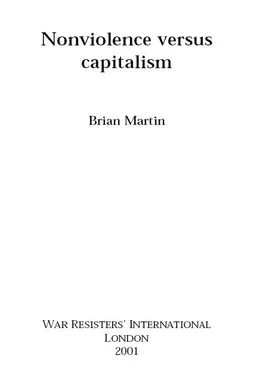One of the fundamental problems with the Leninist approach is its reliance on violence. The power of the state is supposed to be used to benefit the working class, but in practice it is used to benefit the communist party elite. Leninists argue that violence is simply a tool, a means to an end, but history shows that the tool is not neutral, since it tends to corrupt those who control it.
One possible antidote to corruptions due to the power of violence is to arm the people. If the working class is fully armed, this is a potent challenge to both capitalism and to communist party usurpers. Guerrilla struggles are the prime example of the strategy of arming the people. Some guerrilla struggles have had a high level of participation, with many women involved (though not so many participants who are physically unfit, elderly or have disabilities). However, after the triumph of guerrilla armies, it has been standard for conventional military structures to be set up. The only socialist country to rely heavily on an armed population for national defence was Yugoslavia, which may well have contributed to the scale of violence in ex-Yugoslavia in the 1990s.
Another problem with state socialism is that although capitalist ownership is eliminated, domination of workers continues in the workplace in much the same way as in capitalism. Some critics even argue that state socialism is really a form of capitalism run centrally by the communist party, which should be called “state capitalism.” [7] . See, for example, Tony Cliff, State Capitalism in Russia (London: Pluto Press, 1955). The category “state capitalism” is contentious given the significant differences with monopoly capitalism.
Many members of vanguard parties are quite antagonistic towards nonviolence. One possible explanation of this is the heavy reliance of Leninist strategy on violence, seen as necessary because the ends justify the means; if arming the people is seen as necessary, then nonviolence is seen as antirevolutionary. Or perhaps this antagonism is due more to the lack of a vanguard in nonviolence strategy. If there is no vanguard, there is no privileged place for those in it. Another explanation is that creation of dialogue is at the foundation of nonviolent action, something not attractive to vanguard parties since they believe they are exclusive bearers of the true way to revolution. Finally, vanguard parties are built on the premises that capitalism is the central form of oppression and that action in the name of the working class is central to its overthrow. Few nonviolent activists subscribe to these premises.
Socialist electoral strategy
Rather than using armed struggle to capture state power, another option for socialists is to gain state power legally, through election of a communist or socialist party. This, arguably, is just as compatible with Marxism as is Leninism. The first thing is creation of a suitable party, but rather than being or remaining a vanguard party, it must become a mass party in order to win elections. This requires developing popular policies, forging a strong but flexible party organisation, engaging in political debate at local as well as regional and national levels, and campaigning in elections at all levels.
The success of socialist electoral strategy obviously requires victory in elections, but being able to form a national government is only the first step. It is then necessary to use the power of the state to move towards socialism, which means such things as nationalising key industries, introducing or expanding government services such as education and health, putting constraints on corporations and the market, and supporting popular movements for greater power to workers and local communities.
This strategy does not rely on violence for getting elected, but once in government, party leaders seek to use the power of the state to help restrain and gradually replace capitalism. As this process proceeds, the power of the state increases and is more effectively controlled by the government. In the crucial part of the strategy, the actual transition to socialism, the power of the state — including police and military — is maintained or increased, and used to implement the policies of the socialist government. To support this process, mass mobilisation, possibly including armed workers’ groups, may be used.
Socialist electoral strategy has failed in a variety of ways. Many socialist and communist parties have been unable to get enough votes to form a government. When the parties have been very popular, with a chance of winning national elections, sometimes there have been interventions by antisocialist forces to sabotage their efforts, as when the CIA supported nonsocialist parties in Italy and Chile. In some cases after being elected, socialist governments have been “destabilised.” The most famous case is Chile, where the elected socialist government led by Salvador Allende was overthrown in 1973 by a military coup, a process helped along by the CIA.
Whatever the difficulties of gaining and maintaining power, there is a far greater risk of failure from cooption, namely loss of a drive for socialism as the party accommodates itself to the capitalist system. Capitalist interests oppose socialist parties at every stage, from formation to election to policy implementation. Party leaders may be tempted to tone down their rhetoric or to delay introducing socialist initiatives if this means reducing some of the opposition from capitalists, who are able to apply pressure to media, fund opposition parties and withdraw investment.
A communist or socialist party must appeal for votes but operate in a society in which capitalists hold much of the power. Pushing too hard against capitalists may cause a backlash, with capitalists throwing their weight strongly behind less radical parties. However, not pushing hard means disillusionment among some of the most enthusiastic supporters. But left-wing supporters are not likely to vote for conservative parties, so the easiest way to remain electorally viable is to gradually move towards the centre of the political spectrum. Along the way, the rhetoric and actual programme of bringing about socialism is watered down or lost altogether. In this way what started as a socialist strategy becomes a social reform strategy.
This has certainly been the experience of the socialist parties in France, Greece, Italy, Portugal and Spain, the so-called Eurosocialists. These parties started out with commitment to democratisation, Keynesian economic restructuring, cultural renewal and independent foreign policy. However, in adapting to the requirements of getting elected and exercising power, they jettisoned their radical goals, while the social movements that supported them were disempowered. In all major areas — the economy, the structure of state power, and foreign policy — Eurosocialist governments have retreated from their initial goals and become much more like traditional ruling parties. [8] . Carl Boggs, Social Movements and Political Power: Emerging Forms of Radicalism in the West (Philadelphia: Temple University Press, 1986).
Less ambitious than the quest for socialism is the use of state power to bring about social reforms that, among other things, ameliorate the worst effects of capitalism. Examples are minimum wages, unemployment insurance, occupational health and safety regulations, antipollution measures, maternity leave, advertising standards, unfair dismissal legislation and taxation on wealth. While many measures are designed to protect workers, consumers and the environment from the consequences of capitalism, others are intended (as well) to make the capitalist economy work better, such as job training, tariff policy and laws restricting monopolies. The strategy of state-led social reform is often called social democracy, but a better name might be “capitalism with a human face.” It has been the rubric for many reforms that are today seen as essential in a humane, enlightened society.
Читать дальше

![Brian Jacques - Martin the Warrior [Redwall 6]](/books/128385/brian-jacques-martin-the-warrior-redwall-6-thumb.webp)










